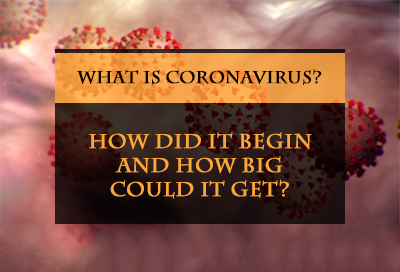
As per the WHO, coronaviruses are a group of infections that cause sickness going from the basic virus to progressively serious illnesses, for example, SARS (Severe Acute Respiratory Syndrome) and the MERS (Middle East Respiratory Syndrome). These infections were initially transmitted from animals to individuals. SARS, for example, was transmitted from civet cats to people while MERS moved to people from a kind of camel.
A few known coronaviruses are circling in animals that have not yet infected people. The name coronavirus originates from the Latin word crown, which means crown or halo. Under an electron magnifying instrument, the seems as though it is encompassed by a solar corona. The novel coronavirus, recognized by Chinese experts on 7 January and since named SARS-CoV-2, is another strain that had not been recently distinguished in people. Little has thought about it, albeit human-to-human transmission has been affirmed.
What are the symptoms of COVID-19?
The most common symptoms of COVID-19 are fever, cough, throat pain, shortness of breath, diarrhea, breathing difficulties, and tiredness. Different symptoms that are less normal and may influence a few patients incorporate aches and pain, nasal congestion, headache, conjunctivitis, sore throat, loss of taste or smell or a rash on the skin or discoloration of fingers or toes. In progressive extreme cases, it can prompt pneumonia, numerous organ failure and even death. Current evaluations of the incubation time duration between infection and the beginning of symptoms extend from one to 14 days. Most infected individuals show symptoms in five to six days.
How does COVID-19 Spread?
Like cold and flu bugs, the infection is spread by droplets when an individual coughs or sniffles. This is why it is important to stay at least 1 meter) away from others. The droplets land on surfaces and are gotten on the hands of others and spread further. Individuals get the infection when they touch their infected hands to their mouth, nose or eyes. It follows that the absolute most significant thing you can do to secure yourself is keep your hands clean by washing them regularly with cleanser and water or a hand purifying gel.
How big could the pandemic get?
As the world further closes down in the wake of the coronavirus pandemic, more cases are presently being recorded outside of China, where the infection was first recognized in the central city of Wuhan, than outside. As of March 26, more than 23,000 individuals worldwide have died of COVID-19, the malady caused by the coronavirus. In excess of 510,000 individuals have tested positive for COVID-19 as indicated by JHU (Johns Hopkins University). The illness has just grabbed hold in Europe, the United States and South East Asia and is starting to unleash destruction in Africa and South America. The World Health Organization is especially worried at the capacity of the poorest nations on the planet to control the infection.
Can COVID-19 be prevented or treated?
A vaccine isn't at present accessible for the coronavirus illness 2019 (COVID-19). No antiviral drug is prescribed to treat COVID-19. Treatment is aimed at relieving symptoms.
What should we do to avoid and safe from Coronavirus?
WHO and CDC prescribe following these precautions for keeping away from COVID-19:
1. Maintain a distance from enormous occasions and mass get-togethers.
2. Maintain a strategic distance from close contact (around 6 feet) with any individual who is sick or has side symptoms.
3. Keep distance among yourself as well as other people if COVID-19 is spreading in your area, particularly if you have a higher danger of serious sickness.
4. Wash your hands regularly with cleanser and water for at any rate 20 seconds, or utilize a liquor based hand sanitizer that contains at least 60% liquor.
5. Always cover your mouth and nose with your elbow or a tissue when you sneeze or cough. Discard the used tissue.
6. Abstain from contacting your eyes, nose and mouth if your hands aren't clean.
7. Clean your doors, windows, and surfaces on a regular routine.
8. Keep up to date on the latest information from trusted sources, for example WHO or your nearby and national health authorities.